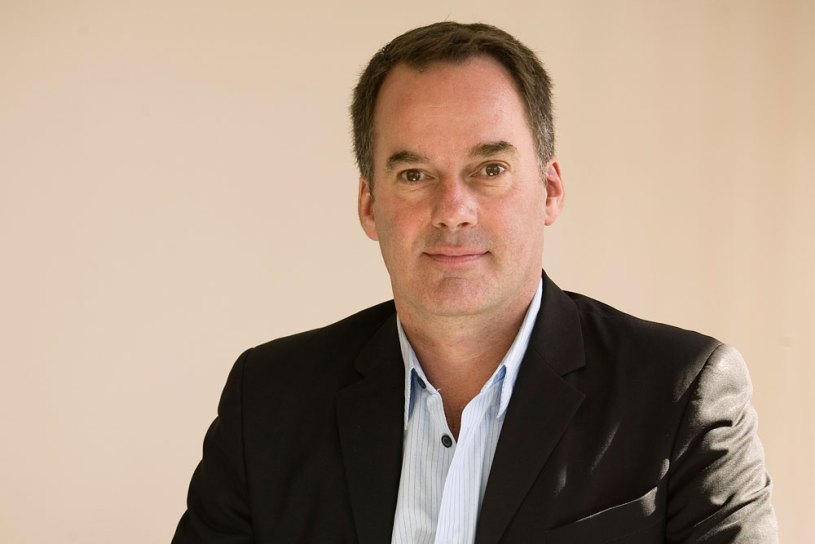Graeme Mason.
Screen Australia CEO Graeme Mason is set to continue leading the agency for a further five years.
The board chaired by Nicholas Moore today confirmed the re-appointment, which extends his tenure to November 10 2023 – no great surprise considering his deal was due to expire next week and there had been no indication that he planned to move on.
Some industry executives told IF they were surprised the board did not advertise the position or appear to make any effort to discover who else might have been available.
But an agency spokesman told IF a couple of months ago the process of appointing for a second term does not always include a call-out for applications and there would be an announcement in due course.
In the 2017-18 annual report Mason observes the number of films released in Australian cinemas has more than doubled in the last 10 years and the number of FTA channels has trebled.
“The competition for audience is fierce – and escalating. ‘Pretty good’ is not good enough. In a digitally disrupted world, only compelling, quality content gets the audience,” he wrote.
Understandably he lauded successes such as the Animal Logic co-produced Peter Rabbit (which used the Producer Offset administered by Screen Australia), Sweet Country, the “cultural triumph” of Mountain, Picnic at Hanging Rock and Mystery Road.
Mason has frequently lamented that the distribution model for most Australian and other independent films is broken and that films which used to gross $3 million are now lucky if they make half that.
“If you think your film will make $4 million to $8 million at the box office and with the knock-on ancillaries, it is almost impossible for that to happen because that model doesn’t stick anymore,” he told IF in March.
However he has yet to articulate a vision of how producers and distributors can reach audiences more effectively. Now we know he has another five years in the driver’s seat, perhaps we can soon expect his views on how the screen industry should adapt and change.
In comments posted on the agency’s website last week, he scotched suggestions that feature films are not a priority, observing that film still is a really important medium culturally and creatively.
He continued: “What we can’t do is just help stuff get made that no one’s going to see, or doesn’t really, really clearly add to the cultural value and worth of the conversation or clearly, if it all works out, lead to some career path. So we’re looking at all those things and I cannot tell you enough, people often willfully ignore all three.”
Welcoming the increasing demand for quality Australian stories in international markets, he noted this can create hurdles for creatives negotiating deals across different formats and budgets, including the traditional TV model, a project for a streaming platform or a low-budget online series.
Renewing his criticism of many deals being struck by producers, he said: “Some of the stuff we’ve seen has just been beyond the beyond, where the rights holders wouldn’t make any money even if their TV show sold to every single network around the world; that if a film took over $200 million the locals wouldn’t see one cent; where gap lenders were getting final cut – now that means a bank is getting final cut on a project.”
According to the KPIs listed in the annual report, the agency under his tenure is more than meeting its targets.
The benchmarks include achieving at least 2.7 million ticket sales in Australia for the feature films it supports, across a 3-year average. Last financial year the total was 3.4 million.
Another goal is a cumulative audience of 107 million for content broadcast on free-to-air and pay TV. Last year that was 113.2 million.
The economic multipliers of dollars generated by agency funding are also healthy. Last fiscal year each $1 invested in TV generated $7.62, with $20.9 million in funding resulting in $159.7 million in production budgets.
In features each $1 generated $7.18, with $21.7 million triggering production worth $156 million.
In children’s TV each $1 generated $6.97, with $8 million in funding underpinning $55.7 million in production budgets.
There was a lower multiplier for documentaries: $1 to $4.49, as $11.4 million investment resulted in $34 million in production.
The agency is certainly a different – and smaller – organisation than the one he inherited five years ago, in no small part due to successive government budget cuts.
In 2013-14 Screen Australia received $101.1 million from the government and invested $74.5 million in direct funding for 196 projects with total production budgets of $346 million.
In 2017-18 government funding had fallen to $81.85 million. The production department approved funding of $69.9 million in 2017-18, including $50.8 million for features, TV drama and children’s TV, $3.5 million in online productions and $15.6 million in documentaries.
The returns from sales of SA-funded content are modest, particularly given grants of up to $500,000 are non-recoupable. Last financial year 72 per cent of sales came from the domestic market with the rest from international.
TV drama sales accounted for 49 per cent of the net returns to the agency, with $1.58 million from adult drama and $990,000 from children’s drama. There were 70 TV sales across 64 territories worth about $7.58 million, led by Picnic at Hanging Rock, Top of the Lake, Wentworth, Miss Fisher’s Murder Mysteries series 1 & 2 and Wanted.
Feature film sales provided 38 per cent of returns, $1.99 million, with 112 sales across 142 territories with an approximate value of $11.44 million.
Documentary sales have more than doubled since 2016-17 and now make up 13 per cent of the total, $688,789, with 73 per cent of sales from the domestic market.



